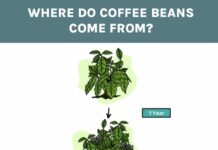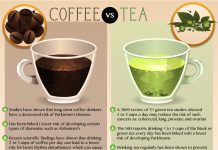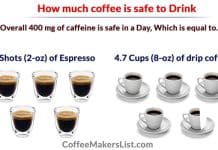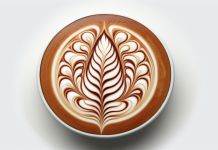If you’re a coffee enthusiast looking to elevate your morning brew to new heights, then mastering the art of pour-over coffee brewing is a skill worth acquiring. A delicate, precise technique that allows for optimal extraction of flavors, pour-over coffee brewing offers a truly mesmerizing experience that is both rewarding and satisfying. With its ability to highlight the unique nuances present in each coffee bean, this method promises a rich, aromatic cup of coffee that will undoubtedly awaken your senses and have you savoring every sip. So grab your favorite beans, hone your pouring skills, and get ready to embark on a journey towards becoming a pour-over coffee maestro.
Choosing the Right Equipment
Selecting the perfect equipment is essential when it comes to mastering the art of pour over coffee brewing. From the pour over brewer to the kettle and grinder, each piece plays a crucial role in creating a delicious cup of coffee. Here’s a guide to help you choose the right equipment for your brewing style and preferences.
Selecting a Pour Over Brewer
When it comes to pour over brewing, the choice of brewer is crucial. There are various pour over brewers available, each with its own unique design and features. Some popular options include the Hario V60, Chemex, and Kalita Wave. Consider factors such as brewer material, capacity, and shape when selecting the right one for you.
Choosing the Right Filter
The filter you choose can greatly impact the taste and clarity of your pour over coffee. Paper filters are the most commonly used filters and are known for their ability to produce a clean and bright cup of coffee. On the other hand, metal filters allow more oils and sediment to pass through, resulting in a stronger and fuller-bodied brew. Consider your personal preference and desired flavor profile when selecting a filter.
Selecting a Kettle
A kettle with a gooseneck spout is essential for precision pouring in pour over brewing. The gooseneck allows for better control over the water flow, ensuring an even extraction. Look for a kettle with a comfortable handle, heat-resistant materials, and an ergonomic design that fits well in your hand.
Grinder Selection
Investing in a quality grinder is crucial for achieving consistent and even extraction in pour over brewing. Burr grinders are highly recommended as they provide a more uniform grind size compared to blade grinders. Consider the grind settings, size, and durability of the grinder before making a purchase. Remember, a consistent grind size is key to a delicious pour over coffee.
Choosing the Right Coffee Beans
Selecting the right coffee beans is essential in achieving a delicious pour over coffee. Understanding the coffee origins and selecting the right roast level are essential steps in this process. Additionally, grinding the beans to the correct size is crucial for optimal extraction.
Understanding Coffee Origins
Different coffee origins have distinct flavor profiles and characteristics. Whether you prefer a bright and fruity Ethiopian coffee or a rich and chocolatey Colombian coffee, understanding where the beans come from can help you choose the flavors you enjoy. Explore different origins and experiment with various single-origin or blended beans to find your preference.
Selecting the Right Roast Level
The roast level of the beans greatly affects the flavor profile of your coffee. Lighter roasts tend to have brighter acidity and showcase the unique flavors of the beans, while darker roasts offer a fuller body and bolder taste with more prominent roast flavors. Consider your preference for acidity, body, and flavor intensity when selecting the roast level.
Grinding Beans for Pour Over Coffee
Grinding the coffee beans to the correct size is essential for achieving the desired extraction. For pour over brewing, a medium-fine grind is generally recommended. This grind size allows for a balanced extraction, ensuring that you can taste the full range of flavors without over or under-extracting. Experiment with grind size and adjust according to the flavors you want to highlight.
Water Quality and Temperature
The quality of water used in pour over brewing has a significant impact on the taste of your coffee. Additionally, the optimal water temperature plays a crucial role in extracting the flavors properly.
Importance of Water Quality
The water you use should be free from impurities and have a balanced mineral content. Water that is too hard or soft can affect the extraction and alter the taste of your coffee. Using filtered water or spring water is recommended to achieve the best results.
Optimal Water Temperature
The water temperature plays a crucial role in the extraction process. The recommended water temperature for pour over brewing is between 195°F (90°C) and 205°F (96°C). This range allows for proper extraction of flavors without scorching the coffee. Invest in a thermometer or electric kettle with temperature control to ensure you’re brewing at the optimal temperature.
The Pour Over Process
The pour over process is an art that requires attention to detail and practice. Each step, from preparing the equipment to discarding the filter, contributes to the final cup of coffee.
Step 1: Prepare the Equipment
Before starting the brewing process, ensure that all your equipment is clean and ready. Rinse your brewer and filter with hot water to remove any residue. Preheat the pour over brewer by pouring hot water into it and letting it sit for a minute. This helps to maintain a stable temperature during the brewing process.
Step 2: Pre-wet the Filter
Place the filter in the pour over brewer and pre-wet it with hot water. This helps to remove any paper taste from the filter and also preheats the brewer further. Discard the water used for pre-wetting before proceeding to the next step.
Step 3: Measure and Grind the Coffee
Measure the desired amount of coffee beans based on your preference and the brewer’s capacity. Grind the beans to a medium-fine consistency, suitable for pour over brewing. The rule of thumb is to use 1:15 coffee to water ratio, but feel free to adjust according to your taste.
Step 4: Bloom the Coffee
Pour a small amount of hot water over the coffee grounds, just enough to wet them evenly. Allow the coffee to bloom for about 30 seconds. This process releases gases trapped in the freshly roasted coffee and enhances flavor extraction.
Step 5: The Pouring Technique
Start pouring water slowly in a circular motion, gradually working your way from the center to the outer edges of the coffee bed. Maintain a steady and controlled pour, ensuring all the grounds are evenly saturated. Take your time and enjoy the meditative, slow-paced pouring process.
Step 6: Repeating the Pour
Continue pouring in a slow and controlled manner, making sure to maintain an even water level. Avoid pouring too much water at once, as it can lead to uneven extraction. The goal is to keep the coffee bed saturated while allowing the water to flow through at a steady pace.
Step 7: Waiting and Timing
After pouring, allow the coffee to brew for a certain amount of time. The ideal brew time varies depending on the amount of coffee and your personal taste preferences. As a general guideline, a brew time of 2-4 minutes is recommended. Experimentation and tasting will help you determine the perfect brew time for your desired flavors.
Step 8: Discarding the Filter
Once the brewing process is complete, carefully lift the filter and discard it with the coffee grounds. Take a moment to appreciate the aroma and the beautiful color of your freshly brewed pour over coffee.
Achieving the Perfect Extraction
The extraction process is crucial in pour over brewing, as it determines the flavors that will be present in your coffee. Understanding extraction, adjusting brew time, grind size, and coffee to water ratio are all key factors in achieving the perfect extraction.
Understanding Extraction
Extraction is the process of dissolving the flavor compounds from coffee grounds into water. Over-extraction can result in a bitter and overbearing taste, while under-extraction can lead to a sour and weak cup of coffee. The goal is to find the balance where the desirable flavors are fully extracted without any undesirable elements.
Dialing in the Brew Time
The brew time refers to the time it takes for water to pass through the coffee grounds during the brewing process. Adjusting the brew time can help fine-tune the extraction. If your coffee tastes overly bitter or strong, try shortening the brew time. If it’s weak or sour, increase the brew time slightly. Keep experimenting until you find the perfect brew time for your taste preferences.
Adjusting Grind Size
Grind size plays a significant role in extraction. Finer grind sizes increase the surface area of the coffee, resulting in faster extraction. Conversely, coarser grind sizes slow down the extraction process but may result in a weaker cup of coffee. Make small adjustments to your grind size and observe how it affects the flavors. Aim for a grind size that allows for optimal extraction without over or under-extracting the coffee.
Determining the Coffee to Water Ratio
The coffee to water ratio is a crucial element in achieving the perfect extraction. As a starting point, a ratio of 1:15 (1 gram of coffee to 15 grams of water) is commonly used. However, feel free to adjust this ratio depending on your preference for a stronger or milder cup of coffee. Keep in mind that the amount of coffee and water used should be proportional to maintain the desired strength and flavor.
Experimenting with Pour Over Variables
One of the joys of pour over brewing is the ability to experiment with various variables to achieve different flavor profiles. Water pour speed, pouring patterns, and bloom time are a few variables you can play around with to create unique and personalized cups of coffee.
Water Pour Speed
The speed at which you pour water onto the coffee bed can affect the extraction. A slower pour allows for more contact time between water and coffee grounds, resulting in a more extracted and flavorful cup. On the other hand, a faster pour can produce a lighter and milder cup. Experiment with different pour speeds and observe the results to find your preferred style.
Pouring Patterns
The pouring pattern refers to the way you distribute water over the coffee bed. Circular, spiral, or back-and-forth patterns are commonly used. Each pouring pattern affects the evenness of the extraction and can influence the flavors in your cup. Experiment with different patterns and observe how they impact the taste of your coffee.
Bloom Time
The bloom time refers to the duration between pouring water over the coffee grounds and the start of the main pour. A longer bloom time allows for a greater release of gases and can result in a more vibrant flavor profile. Conversely, a shorter bloom time can produce a cleaner and milder cup. Experiment with different bloom times and adjust accordingly to achieve the desired flavors.
Troubleshooting Common Issues
Despite your best efforts, you may encounter some common issues during the pour over brewing process. Understanding these issues and how to troubleshoot them can help you overcome any obstacles and improve your brewing skills.
Under-extraction
Under-extraction occurs when the coffee is not fully extracted, resulting in a weak and sour cup. To remedy under-extraction, try increasing the brew time slightly or using a finer grind size. Experiment with these adjustments until you achieve a balanced and flavorful cup of coffee.
Over-extraction
Over-extraction happens when the coffee is extracted for too long, leading to a bitter and overpowering taste. To address over-extraction, try shortening the brew time or using a coarser grind size. These adjustments will reduce the overall extraction and result in a smoother and more balanced cup.
Uneven Extraction
Uneven extraction can occur when the water does not adequately saturate the entire coffee bed, resulting in some areas being over or under-extracted. To achieve a more even extraction, ensure that you pour the water evenly and use a pouring pattern that covers the entire coffee bed. Additionally, consider adjusting your grind size to allow for more consistent extraction.
Choking the Brew
When the water flow becomes too slow or completely stops during the brewing process, it is known as choking the brew. This can happen due to a fine grind size or excessive coffee bed compaction. To prevent or fix this issue, try using a slightly coarser grind size and ensuring that the coffee bed is not tightly packed. Adjusting these factors will help maintain a steady flow of water through the coffee bed.
Filter Clogging
Filter clogging can occur when the filter becomes blocked by fine coffee particles, hindering the water flow and impacting the extraction. To prevent this issue, ensure that your grinder produces a consistent grind size and avoid using too many fine particles. Additionally, consider using quality filters that allow for good water flow while still trapping any sediment.
Tasting and Evaluating Your Brew
Once you’ve brewed your pour over coffee, it’s time to taste and evaluate the flavors. A methodical approach to tasting can help you appreciate the nuances and complexities of the coffee.
Use a Tasting Wheel
A tasting wheel is a useful tool for identifying and describing different flavors in coffee. It provides a visual representation of various flavor profiles and helps to expand your vocabulary when discussing the coffee’s taste. Refer to a tasting wheel to identify specific flavors and nuances in your brew.
Evaluating Aroma
Take a moment to appreciate the aroma of your freshly brewed pour over coffee. The aroma can provide insights into the flavors you can expect. Note any floral, fruity, or chocolatey scents that are present. Inhale deeply and let the aroma guide your expectations for the taste.
Assessing Flavor Profiles
Sip your coffee and pay attention to the flavors that come through. Is it bright and acidic, or rich and chocolatey? Notice the subtleties and complexity of the flavors. Take your time to savor and appreciate each sip.
Identifying Strength and Body
Strength refers to the intensity or concentration of the flavors in the coffee. Assess the overall strength of your brew – is it strong and bold or delicate and mild? Body refers to the mouthfeel and texture of the coffee. Does it feel light and tea-like or heavy and syrupy? These characteristics contribute to the overall enjoyment of the coffee.
Noting Acidity and Balance
Acidity is an important aspect of coffee that can range from bright and vibrant to smooth and low. Note the level of acidity present in your pour over coffee and how it interacts with other flavor components. Balance refers to the overall harmony of flavors in the cup. A well-balanced coffee has a pleasant interplay of acidity, sweetness, and bitterness. Evaluate how the different flavor elements come together to create a balanced and enjoyable brew.
Cleaning and Maintaining Your Equipment
Proper cleaning and maintenance of your pour over brewing equipment are essential for consistent and optimal performance. Follow these guidelines to keep your equipment in excellent condition.
Regular Cleaning Routine
After each use, rinse the pour over brewer, filter, and kettle thoroughly with hot water. Use a gentle brush or sponge to remove any residue or coffee oils. Avoid using harsh detergents or abrasive materials that can damage the equipment. Allow all the components to air dry before storing them.
Deep Cleaning
Periodically, it’s a good idea to do a deep cleaning of your pour over brewing equipment. Soak the brewer and filter in a mixture of warm water and mild soap for a few minutes. Gently scrub the surfaces to remove any stubborn stains or residues. Rinse thoroughly and repeat if necessary. For the kettle, follow the manufacturer’s cleaning instructions to remove any mineral deposits.
Maintenance Tips
Regularly inspect your equipment for any signs of wear or damage. Replace worn-out filters, gaskets, or other parts as needed. It’s also important to descale your kettle regularly if you live in an area with hard water. Follow the manufacturer’s instructions for descaling to keep your kettle functioning properly.
Final Tips for the Perfect Pour Over
Mastering the art of pour over brewing takes time and practice. Here are some final tips to help you achieve the perfect cup of pour over coffee.
Freshly Roasted Beans
Choose high-quality beans that are freshly roasted. Freshly roasted beans will have more vibrant flavors, ensuring a more enjoyable pour over experience.
Consistency and Practice
Consistency is key in pour over brewing. Fine-tune your technique and measurements to ensure consistent results with each brew. Practice regularly to refine your pouring technique and become more comfortable with the process.
Taste and Adjust
Trust your taste buds and experiment with different variables to achieve your desired flavors. Adjust the grind size, brew time, and coffee to water ratio based on your personal preferences.
Enjoy the Brewing Process
Pour over brewing is as much about the journey as it is about the destination. Embrace the slow and meditative process of pouring water over coffee grounds. Take the time to appreciate the aroma, flavors, and overall experience of pour over brewing. Enjoy the process and savor every sip of your meticulously brewed cup of pour over coffee.
By following these guidelines and exploring the intricacies of pour over brewing, you’ll unlock a world of flavors and create truly remarkable cups of coffee. So grab your equipment, your freshly roasted beans, and embark on a pour over coffee brewing journey that will elevate your coffee experience to new heights. Cheers!





































